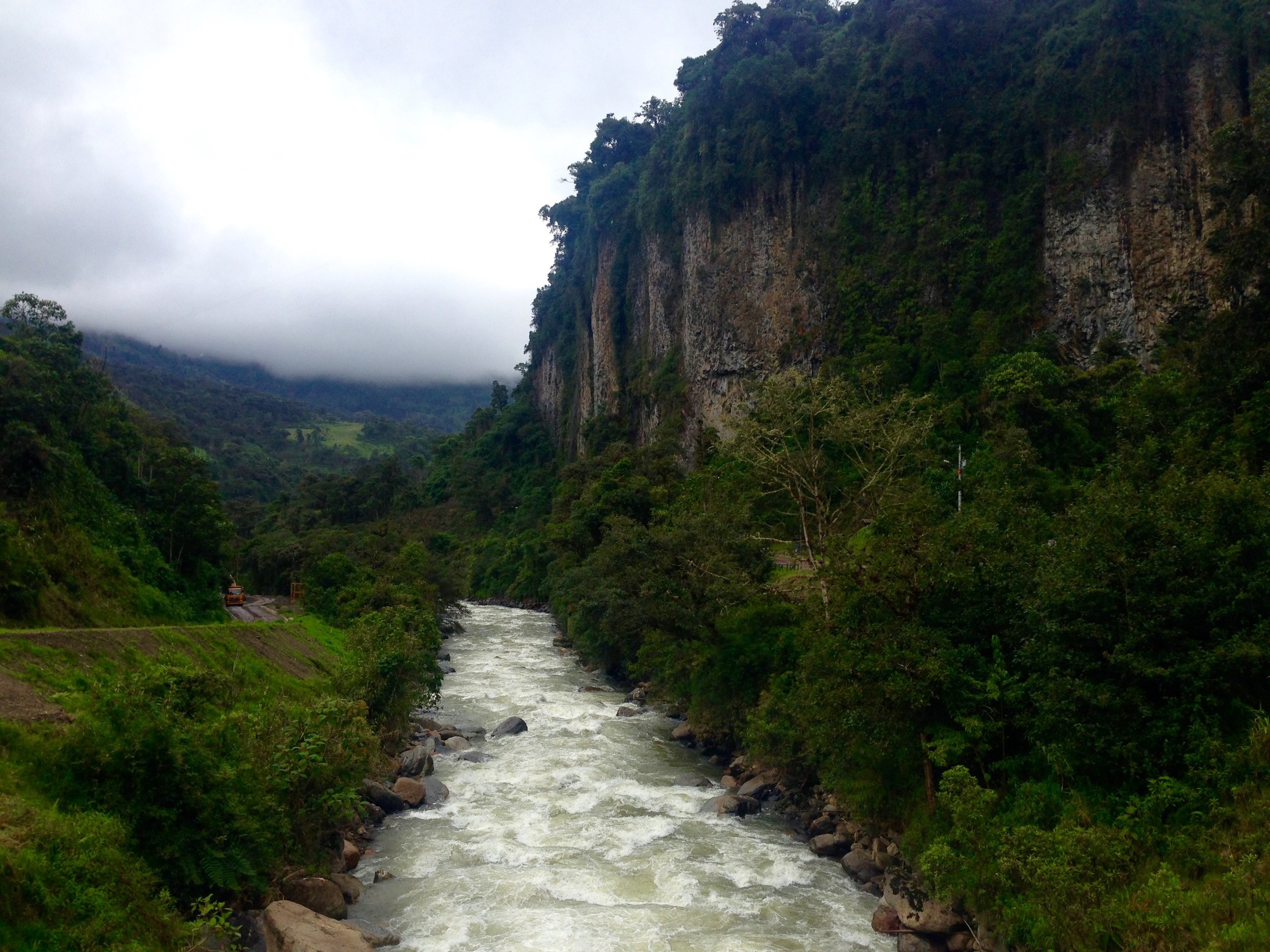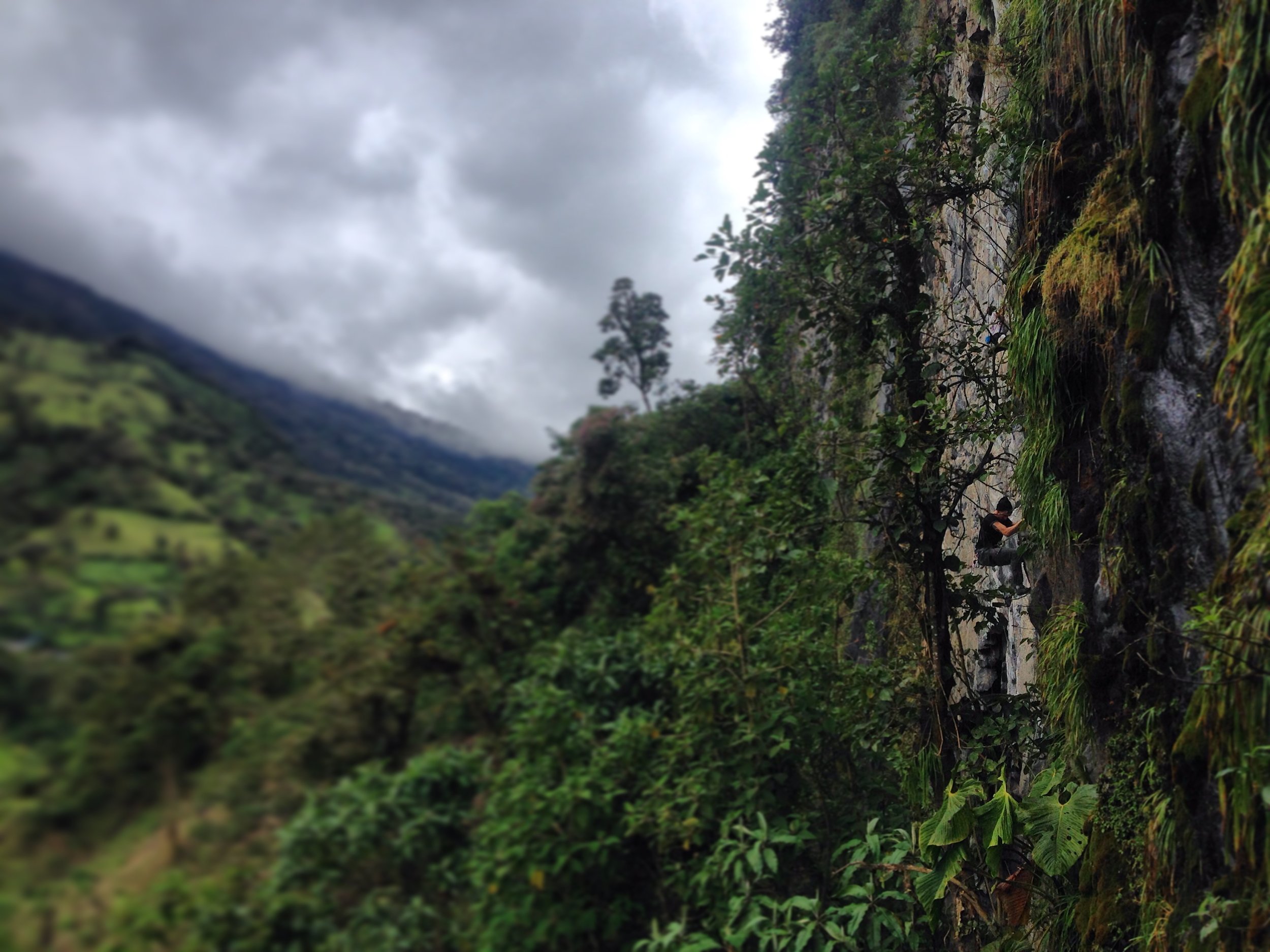Reasons, promises, and Cuyuja climbing
 Cuyuja towers over the Rio Papallacta.
Cuyuja towers over the Rio Papallacta.
A lot of Ecuadorians ask me why I chose to move here.
I knew no one in this country. I had never lived more than 15 minutes from my parents, and my knowledge of Ecuador was limited to a vague mental image of an alpaca in a poncho. I had never even been to South America. So I understand why my presence here seems pretty random to taxi drivers, coworkers, and even fellow gringos. Maybe it seems more random when I tell them that I moved here for the climbing.
Yes, I wanted to teach, and yes, I wanted to speak Spanish, but I knew I could happily do those things anywhere in Latin America. The bigger question mark was rocks.
So when Peace Corps had openings in Panama, Nicaragua, Colombia, Costa Rica, and Ecuador, I knew my first choice would be the country with the most accessible escalada. I’m not in the Peace Corps anymore, but I’m grateful that it brought me to this beautiful country, its people, and its crags.
It's been easy for me to find beta here, because climbers are friendly and I speak Spanish. Monodedo’s topos are an invaluable resource, as is Ecuador’s first guidebook. Topos Ecuador will give you the lowdown on sport crags and mountaineering, and Bloque A Muerte has the bouldering beta.
But what about you lovely climbers who wanna Ecua-climb but don't speak Spanish? Hopefully you're working on that, but in the meantime I'mma help you out by writing as much as possible, in English, about your options.
Although the scene is relatively young here, Ecuador has some excellent climbing, and a lot of psyched escaladores are developing potential across the country. I’ve even gotten to do some dirty work myself! But Sunday, I visited one of Ecuador’s most established sport crags for the first time.
 Pedro on La Bruta, a techy 6c+/5.11c with high feet for days.
Pedro on La Bruta, a techy 6c+/5.11c with high feet for days.
Cuyuja is a little town southeast of Quito, just a few miles from hot spring haven Papallacta. You can see the rock face from the bus stop, and the approach takes about half a second.
Andesite and basalt make up Cuyuja’s featured vertical face, and climbs tend to favor technique and endurance over brute burl. This crag, first opened in 2005, is the area’s most developed. 78 routes flank the Río Papallacta, with grades ranging from IV/5.6 to 8a/5.13b. #Swooning: Alex Honnold made time during his Reel Rock visit last fall to create Honnold’s Sick Linkup (7c+/5.13a).
Don’t forget to bring a rain jacket to this crag. It’s pretty close to the rainforest, and mucha lluvia happens here. However, if it’s not absolutely pouring you should be able to climb.
Make sure your belayer wears a helmet here. I’m serious. Falling rock is a real threat on the less popular routes.
There is no fee to climb here, but as always, be respectful and take care of the area. It’s also a good idea to support the local economy by buying your snacks in town.
Bus Directions from Quito, Ecuador to Cuyuja
It’s easy! First, take a bus from la Estación Río Coca to the Scala bus stop in Cumbayá. From there, you can catch a bus toward Tena. Ask the driver to drop you in Cuyuja. It’s a short walk from the bus stop to the rock face, which towers over the tiny poblado.
Another option: you could take a single bus from Quitumbe. I really don’t know which is more efficient, but I suppose it depends on where in the city you are staying.
More information about routes and navigation may be found in Felipe Proaño Iturralde’s guidebook, Rutas de Escalada en Ecuador, Vol. 1: Zona Oriental de Quito. You can find it at Monodedo, Campo 4, the tiendita at Sigsipamba, and probably other places.
I’m about to head to the Cuenca area to climb and write down south for a month. Who wants to join me? Seriously, hit me up if you want to climb!